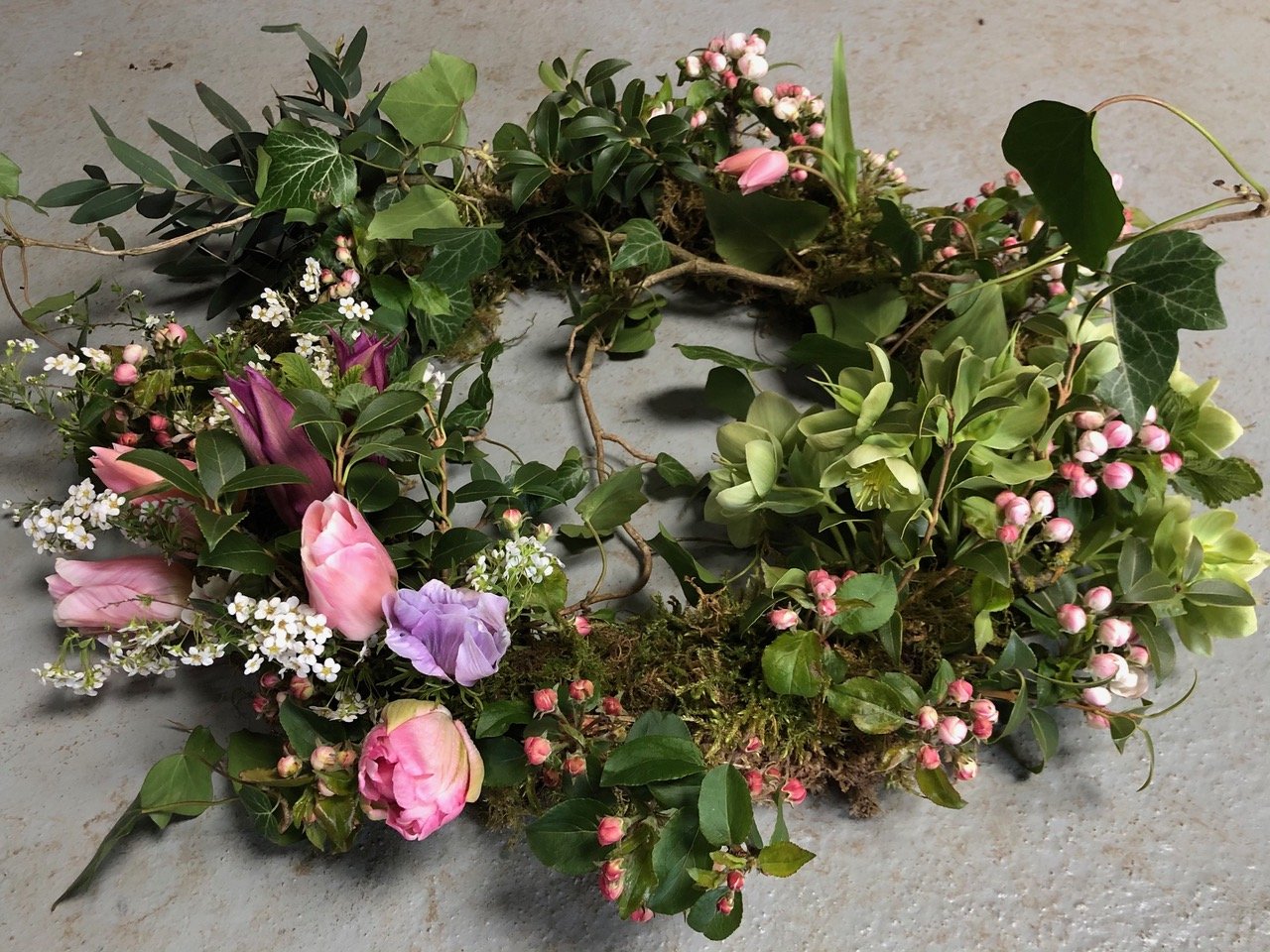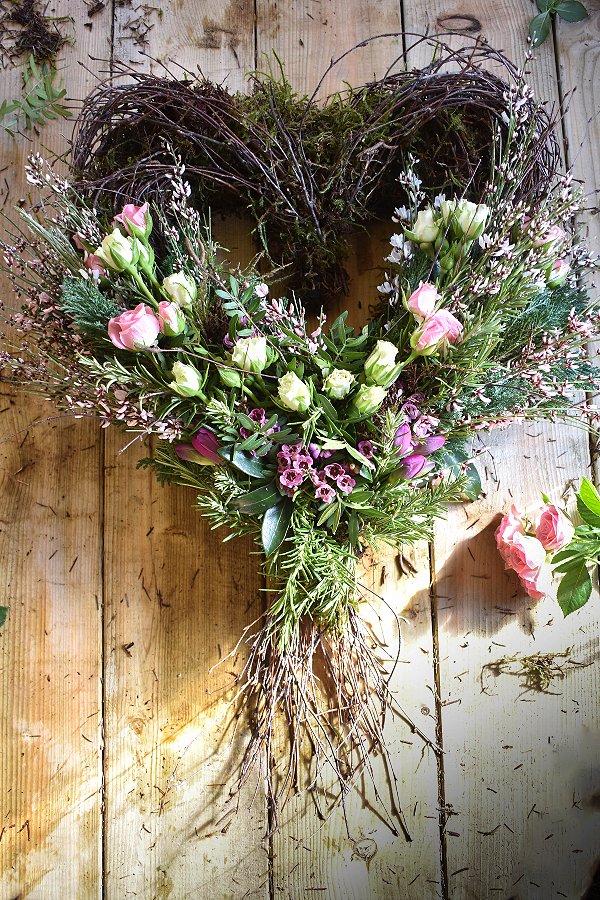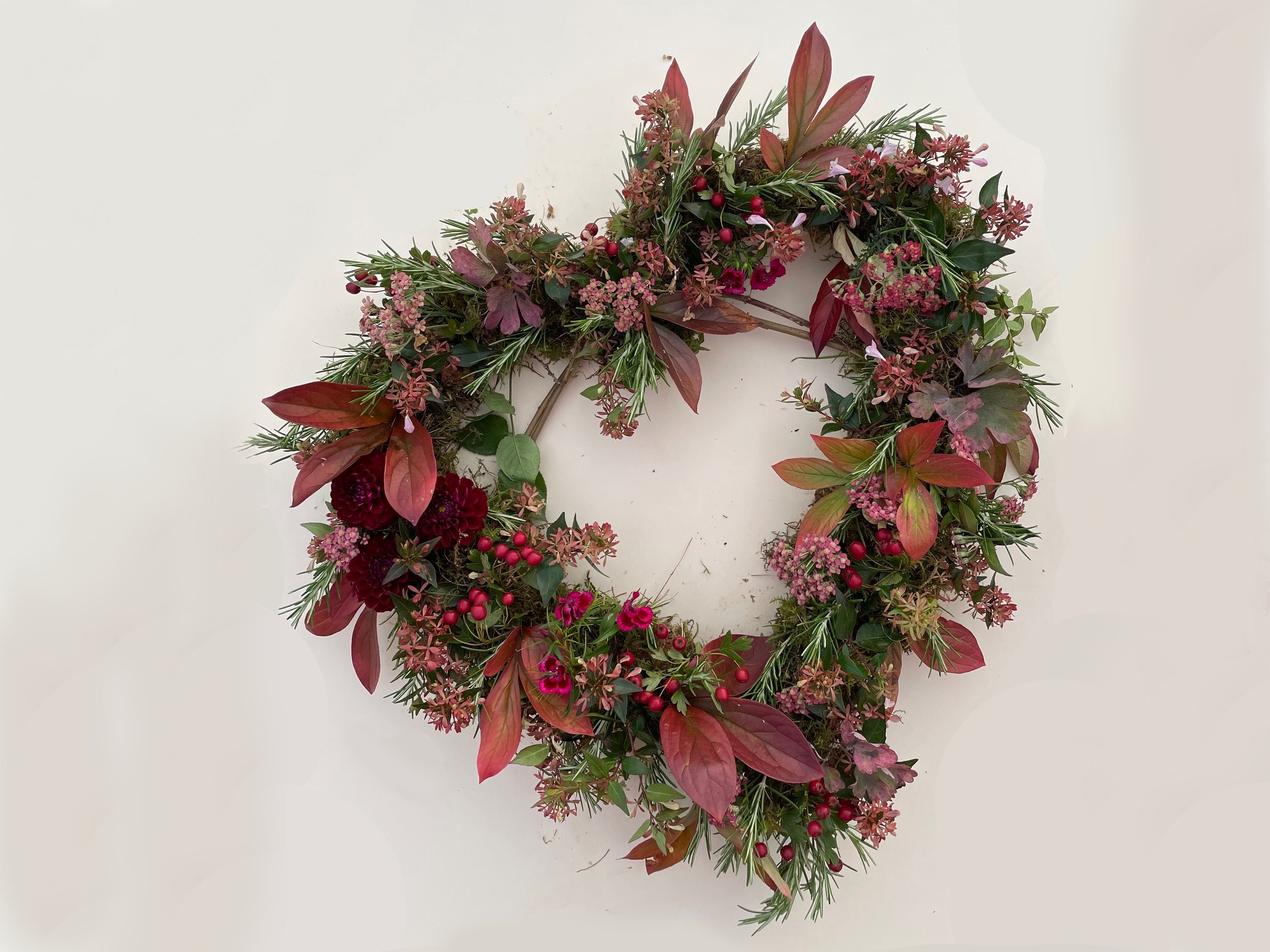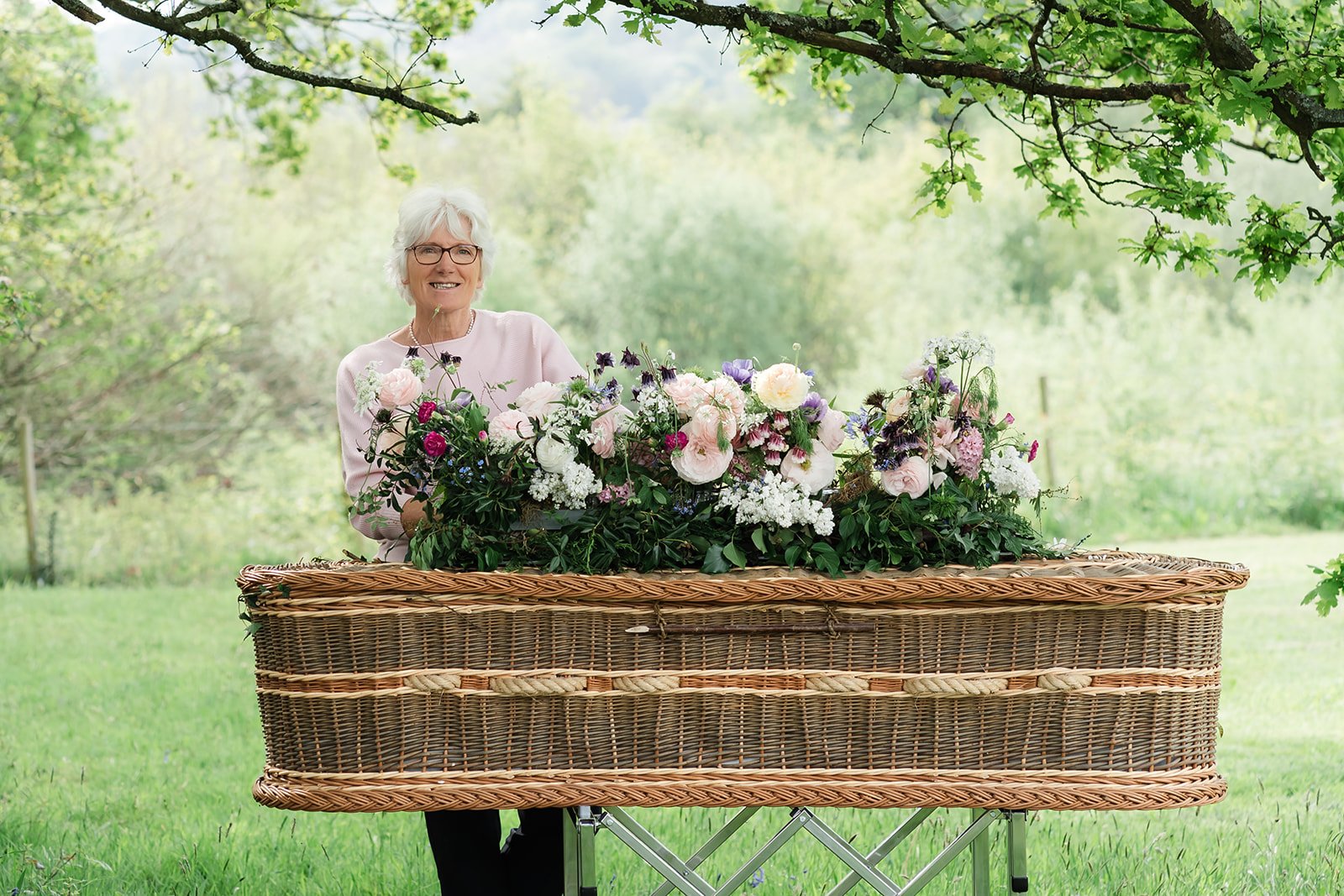What’s a wreath?
Gill Hodgson of The Farewell Flowers Directory and Fieldhouse Flowers, Yorkshire
A winter wreath with snowdrops on an exposed twisted willow base.
A wreath is an assortment of flowers and foliage often constructed in a circle. They’re relatively rigid in structure and as well as being a stable arrangement to place on top of the coffin, they can also stand on edge to lean against it or against a headstone. They can also be displayed upright, displayed on a stand at the front of the funeral ceremony. They don’t have to made only of flowers - you could include fruit, seedheads and even vegetables to mirror someone’s interests.
Until a few decades ago, wreaths were the standard choice for all funeral flowers; their circular shape, with no beginning and no end, representing eternal life.
They’re still seen regularly – almost all the flowers laid in remembrance at Cenotaphs across the country are circular – but other shapes have become increasingly more common, and I’m often asked to create them in the shape of a heart.
Whatever shape you choose, wreaths have some similarities. They come in a range of sizes but usually have a maximum diameter of around 55cms (22 inches) in order to sit easily on top of a coffin and will be constructed on a strong frame. When made with sustainability in mind, wreath frames are woven by florists from twisted woody stems, and bound with twine so that they are fully compostable, unlike their cousins based on plastic-derived floral foam. The flowers, foliage and other ingredients can cover a compostable base entirely, or you can leave some of the attractive base exposed. The choice is yours.
If you’re hoping to share out some flowers after the funeral service then a wreath, with its short stems probably isn’t an ideal choice: it may be better to go for a shareable sheaf or a casket spray. Wreaths do, however, lend themselves perfectly to being filled with small plants which you can plant and enjoy your gardens for years to come.
Planted wreaths can work at all times of the year, but my favourite time to make them is Spring. In Spring there is a wide range of readily available potted plants and bulbs such as miniature narcissi and muscari and pretty perennials like primroses, violas and aubretia - all of which are perfect candidates for nestling, as plants, into a seasonally inspired wreath.
If sustainability and local provenance are at the heart of your choice for funeral flowers, a wreath is also perfect in winter months when the choice of outdoor-grown, local ingredients is limited. It may be difficult to find long-stemmed florals to make a substantial arrangement such as a sheaf style bouquet, but there’s always beauty to be found on a shorter scale even in the depths of winter. The pretty textures and details which continue through the colder months lend themselves beautifully to wreath style arrangements where they can be showcased and appreciated up close.
A wreath is traditional with its pleasing symmetry and can be used as the main arrangement for a funeral, accompanied by smaller ones from children, grandchildren or friends who wish to contribute floral displays.
Gill is co-founder of The Farewell Flowers Directory and runs Fieldhouse Flowers in the East Riding of Yorkshire. She also founded of Flowers from the Farm to promote local growing and use of British cut flowers in the UK.
Gill’s designs reflect the seasons and are full of foliage cut from her family farm. She’s a firm believer that there’s a better and more sustainable way to do funeral flowers.
The Farewell Flowers Directory aims to realise her vision of making plastic-free funeral flowers available to everyone across the UK, and to change the way funeral flowers are imagined by the public, funeral directors and florists alike.
Read more about why Gill set up The Farewell Flowers Directory










